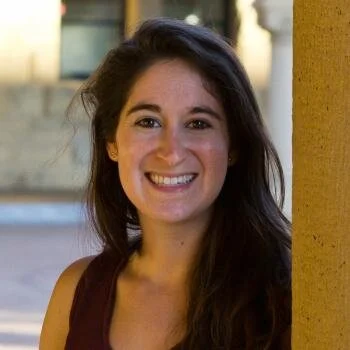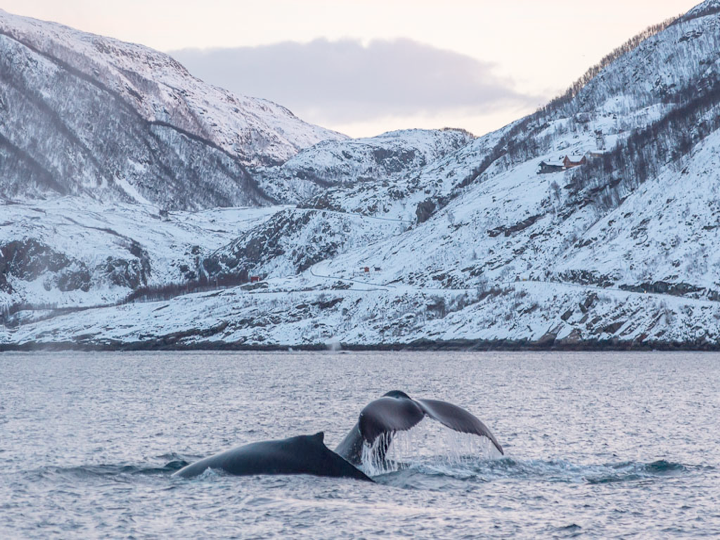
I’m a reformed winter hater. I grew up on the Jersey Shore, home of Bruce Springsteen, where the best time of year meant drippy ice cream cones, boogie boarding in the waves, and cursing the New Yorkers who migrated down to enjoy our sand and surf and tripled the local traffic. I took it for granted that everyone, everywhere, knew that summer was the best season.
Then, in 2014, I moved to the Arctic. As part of my ongoing research as a health psychologist studying how people thrive, I went to learn from Joar Vittersø, a researcher at the University of Tromsø, who studies life satisfaction, happiness, and personal growth. Tromsø is so far north — over 200 miles north of the Arctic Circle — that the sun doesn’t rise for two months each winter, during a period that’s known as the “Polar Night.”
In Tromsø, I started realizing that my summer-is-best perspective wasn’t so universal. While many people in the U.S. wished me good luck “surviving” the winter, people in Tromsø actually enjoyed the winter. They loved wintertime activities like skiing (Joar would often commute to the university via the city’s cross-country ski trail). They relished in the opportunity to make things koselig (the Norwegian word for “cozy,” synonymous with Denmark’s hygge), and they took time to celebrate and appreciate winter.
My research in Tromsø revealed that people there have a positive wintertime mindset. They are more likely to view winter as delightful than dreadful, and more likely to recognize winter as a time with many opportunities than a limiting time of year. I also found that, in Norway, a positive wintertime mindset was associated with well-being: people with more positive wintertime mindsets also had greater life satisfaction and experienced more frequent positive emotions.

Winter in Tromsø is especially magical. I’d routinely walk home from the bus stop to see the Northern Lights dancing in the sky. Outside my bedroom window, snow-capped mountains rose on the opposite side of a fjord. Whales frolicked in the waters surrounding the city, stopping to fatten up on schools of tiny fish before continuing their journey to warmer waters in which to birth their babies. (These whales still routinely show up in my dreams.) But the people in Tromsø also make winter magical. They celebrate winter.

One of the ways they do this is with winter festivals. Around the holidays, Christmas markets are common, as they are throughout Europe and Scandinavia. At these markets I bought my very favorite handmade mittens with foxes on them and a real reindeer skin for my new baby cousin. And a highlight of February each year is Tromsø’s Sami Week, a festival in conjunction with Sami National Day on February 6th. Sami is the name for the indigenous people of Sápmi, the Arctic regions of Scandinavia. A celebration of Sami culture, Sami week is an opportunity to taste traditional Sami foods, like reindeer, and purchase beautiful artwork and handicrafts from Sami artisans. But the highlight is the reindeer race. Tromsø shuts down the main street, and reindeer tear down the main drag, spurred on by the racers who hold onto their reins and whiz after them on cross-country skis. Crowds cheer as each race finishes in seconds, because the reindeer can sprint nearly 40 mph. This is also where I learned that reindeer lose and regrow their antlers each year.
But my favorite festival is Tromsø’s international film festival. For one week at the end of each January, any venue in town that can be turned into a movie theater is devoted to the festival. That includes not just the city’s movie theaters, but also concert halls and performing arts spaces, town squares, and the sides of buildings. The whole city scurries from venue to venue between screenings, visitors from all over the world pore over the film schedule, and children are brought from school on class trips to sit in the main town square and watch films outdoors on the “snow screen.”

This was what fascinated me most about the festival. Tromsø holds its most famous festival in the dead of winter, when the city gets, at most, a few hours of sunlight a day. It’s among the coldest times of the year. And yet, people come from all over to be part of the festival. People leave their homes to be part of it, even willingly sitting outdoors in the Arctic in January to watch a movie or take in the light installations that sprinkle the city.
The Great Northern is part of this international tradition of deliberately, exuberantly, sometimes even defiantly celebrating winter. Since I left Tromsø, I’ve been part of other winter festivals as well: Canada’s Winter Cities Shake-Up, which I attended in Edmonton and Saskatoon, and the Hebridean Dark Skies Festival, which takes place on the Isle of Lewis, Scotland, and celebrates the darkness of the winter sky.
What I’ve realized from being part of these festivals is that they both reflect and create a celebration of winter. It takes an appreciation of winter, in all its icy glory, to create a winter-centric festival. But it also makes winter a celebratory time. Many of these festivals, like The Great Northern, take place towards the end of January. This is what I think of as the “winter doldrums.” This is the time of year where the coziness afforded by the winter holidays has somewhat abated, and the freshness of the season has dulled a bit. It’s the middle of winter, with more still to go. By celebrating darkness with light – literally, with bonfires and luminaries and light installations, and figuratively, with the coming together and excitement of the festival – we make this time of year even more appealing, a time to look forward to.
>
“While individuals hold mindsets, these mindsets are created and shaped by our context, our culture, and our surroundings.”
In my research, I study how individuals’ mindsets influence their health and wellbeing. But while individuals hold mindsets, these mindsets are created and shaped by our context, our culture, and our surroundings. I learned to love winter in Tromsø because everyone loved winter in Tromsø. When the whole city makes the season special, and the predominant attitude is that winter is wonderful, it’s easy to slip into that positive wintertime mindset. Winter festivals can solidify this perspective, bringing together the people who already love winter and giving winter skeptics a fresh perspective. They help us see winter differently, through art, music, and conversation. They bring us together, luring us out of our hibernation burrows, giving us a reason to bundle up and venture in search of experience. They show us how much is possible in the winter — whether it’s whooshing around cross country ski Loppets, admiring snow sculptures, or being warmed from the inside out by wintery dishes. In short, a winter festival is a mindset intervention, an immersion and an invitation to change your wintertime mindset.
Try it yourself. You are, after all, reading this blog post. As you engage with The Great Northern this year — differently than usual, but in a way that is perhaps more necessary than ever — tune in to your own wintertime mindset. Then, ask yourself what comes to mind when you think of winter. Make a list of the things you love and look forward to about winter. Try and convince a winter-bashing friend to find one thing that makes winter great. Maybe, like I experienced in Tromsø, you’ll find that being part of a winter festival helps you fall a little more in love with winter this year.

Kari Leibowitz, PhD is a health psychologist and Stanford Interdisciplinary Graduate Fellow in Psychology at Stanford University. Her research in the Stanford Mind & Body Lab helps us understand and harness mindsets to improve health, well-being, and performance. Kari received her undergraduate degree from Emory University, and her work has taken her all over the world as she organized the 2013 visit of the Dalai Lama to Emory, co-led three summers of Emory’s Tibetan Mind/Body Sciences study abroad program in India, and served as a U.S.-Norway Fulbright scholar. As a Fulbright scholar, Kari lived in Tromsø, Norway, north of the Arctic Circle, and studied mindsets about winter. In addition to publishing her academic work in numerous peer-reviewed outlets, Kari has delivered talks and workshops on how to leverage the power of mindset to international audiences. She shares insights and her experience living in the Arctic in her Wintertime Mindset Workshop. She has been interviewed by Anderson Cooper, and her writing has appeared in The Atlantic and The New York Times. For more information, visit karileibowitz.com.

